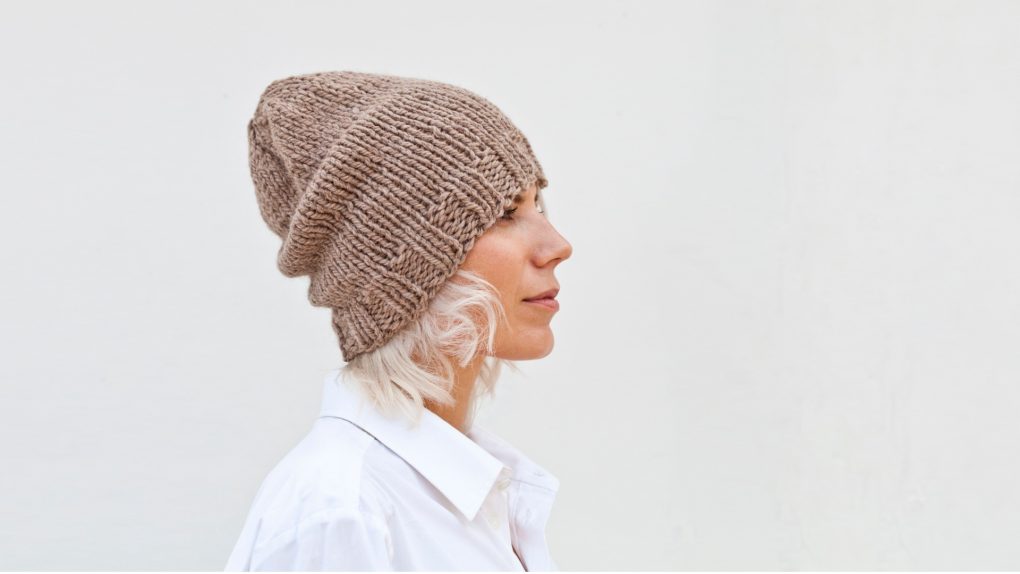Toque vs. Beanie vs. Skull Cap: Understanding the Differences
Toque, beanie, and skull cap are popular headwear options commonly worn during the colder months. While they may look similar, subtle differences between the three make each unique.


- Beanies: They are typically made of wool, acrylic, or a blend of both and are designed to be pulled snugly over the head. They are often worn for style and warmth and in various colors, patterns, and styles. Beanies are versatile and can be paired with various outfits, making them a popular choice for both men and women.
- Toques: They are a type of knitted hat that originated in France. They are typically made of wool and feature a pom-pom or tassel on top. Toques are longer than beanies, and often slouch at the back. They are commonly worn in Canada and other cold-weather regions and are often associated with winter sports such as skiing and snowboarding.
- Skull Caps: They are similar to beanies but are typically made of a thinner material such as cotton or polyester. They are designed to fit snugly over the head and are often worn under a helmet or other headgear for added warmth. Skull caps are popular among motorcyclists, cyclists, and other outdoor enthusiasts who must keep their heads warm without adding bulk.
Toque
Definition
A toque is a type of hat that is typically made of wool and worn in cold weather. It is a brimless hat that fits closely to the head and covers the ears. Toques are often topped with a pom-pom, a small, round ball of yarn. The pom-pom is usually made of the same material as the toque but can also be made of fur or other materials.


History
Toques have been worn for centuries, dating back to medieval times. Men and women originally wore them to keep their heads warm in cold weather. Over time, toques became more fashionable and were worn as a status symbol by the wealthy.
In the 16th century, toques became popular among skiers and other winter sports enthusiasts. Soldiers also wore them during World War II to keep their heads warm in cold weather.
Styles
Toques come in a variety of styles, colors, and materials. Some toques are plain and simple, while others are more decorative and feature patterns or designs. Toques can be made of wool, acrylic, or other materials and can be lined with fleece or other warm materials for added insulation. Some popular styles of toques include:
- Pom-pom toques: These toques feature a small pom-pom on top.
- Slouchy toques: These toques are longer and looser than traditional toques.
- Cuffed toques have a folded cuff at the bottom for added warmth.
Beanie
Definition
According to Vocabulary, the beanie is a type of hat typically made of a knit material designed to fit snugly on the head. It is a brimless hat, meaning it does not have a visor or bill like a baseball cap. Beanies are usually worn in cold weather to keep the head and ears warm. They are also popular fashion accessories and can be worn in various styles.


History
The exact origin of the beanie is still being determined, but it is believed to have originated in the United States in the early 1900s. It was originally worn by blue-collar workers such as mechanics and construction workers to keep their heads warm while working outside in cold weather. The beanie became more popular in the 1950s and 1960s when the Beatnik and hippie subcultures adopted it. Today, beanies are worn by people of all ages and backgrounds.
Styles
Many different styles of beanies are available, each with its unique features and characteristics. Some popular styles include:
- Cuffed: This beanie style has a folded cuff at the bottom, which adds extra warmth and helps keep the hat in place.
- Slouchy: A slouchy beanie is a looser-fitting hat designed to sit further back on the head. It has a more relaxed, casual look and is often worn with streetwear or casual clothing.
- Pom-pom: A pom-pom beanie is a style with a small ball of yarn or fabric attached to the top. Children and young adults often wear a playful, fun style.
- Fleece-lined: A fleece-lined beanie has a soft, warm lining on the inside that provides extra insulation and comfort. It is a great option for very cold weather.
Beanies are available in various colors, materials, and patterns, making finding a style that suits your taste and needs easy.
Skull Cap
A skull cap is a type of beanie generally made of a thinner material designed to be worn on one side. A brimless cap fits tightly on the head, covering the entire scalp. Skull caps, also known as do-rags, bandanas, or head wraps, are often worn by athletes, construction workers, and motorcyclists.


Definition
A skull cap is a type of beanie designed to fit snugly on the head. It is made of thin material and is usually worn on one side of the head. Skull caps are brimless and cover the entire scalp, making them ideal for use under helmets or other headgear. They are commonly used by athletes, construction workers, and motorcyclists to keep their heads warm and protect them from the sun and wind.
History
Skull caps have been used for centuries in various cultures around the world. Men originally wore them in ancient Greece and Rome as status symbol. In the Middle Ages, skull caps were worn by knights under their helmets to provide extra padding and protect their heads from blows. In the modern era, skull caps have become popular among athletes and other active individuals who must keep their heads warm and protected.
Styles
Skull caps come in a variety of styles and materials. They can be made from wool, cotton, polyester, or other materials. Some skull caps are designed to be worn on one side of the head, while others can be worn on either side. Some skull caps have a visor or brim, while others are completely brimless. Skull caps can also be decorated with logos, patterns, or other designs.
Materials
Wool
Wool is popular for toques, beanies, and skull caps because of its natural warmth and insulating properties. It is also durable and can withstand harsh weather conditions. However, wool can be itchy and uncomfortable for some people and shrink if not washed properly.
Acrylic
Acrylic is a synthetic material commonly used in producing beanies and toques. It is lightweight, soft, and has excellent moisture-wicking properties. Acrylic is also a good alternative to wool for people allergic or sensitive to wool fibers. However, acrylic may be warmer than wool and can pill or lose shape over time.
Cotton
Cotton is a natural fiber that is breathable and comfortable to wear. It is also hypoallergenic, making it an ideal choice for people with sensitive skin. However, cotton is warmer than wool or acrylic and may not be suitable for extremely cold weather conditions. Additionally, cotton can absorb moisture, which may make it feel damp and uncomfortable to wear in wet conditions.
Functionality
When choosing between a toque, beanie, or skull cap, functionality is important. Each type of headwear offers its unique features and benefits.
Warmth
Based on experience, all three types of headwear are designed to keep the head warm in cold weather. However, toques and skull caps are more effective at keeping the head and ears covered and protected from the cold. On the other hand, beans are usually made of lighter materials and may not be as effective in extremely cold temperatures.


Comfort
Toques and beanies are often made of soft, comfortable materials such as wool or fleece, making them more comfortable to wear for extended periods. Skull caps, conversely, are often made of thinner materials and may provide less cushioning or insulation.
Fashion
While all three types of headwear are functional, they also offer different fashion options. Beanies are often seen as a more casual and trendy option, while toques can be more versatile and worn in casual and formal settings. With their snug fit and sleek design, Skull caps are often favored by athletes and those looking for a more streamlined look.
